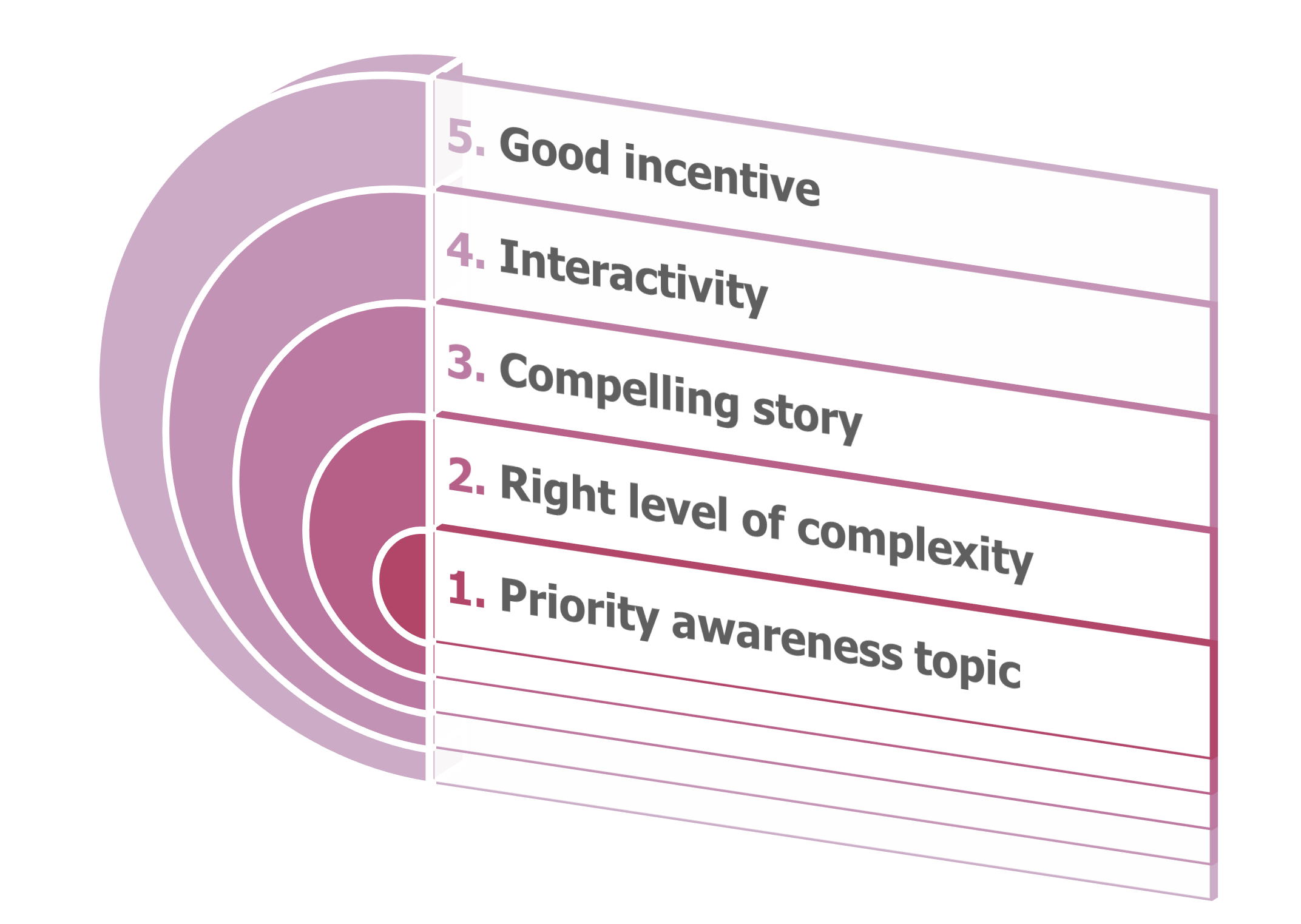Cyber Month is to cybersecurity awareness what the Olympics are to sports: the time to shine, with all eyes on you.
Given that human-risk remains significant, with human error accounting for 82% of data breaches according to the 2022 Verizon Data Breach Investigations Report, no wonder CISOs across European organizations are aiming for the most innovative and ground-breaking activities during this crucial time of the year.
Once key risks have been identified, it’s go-time: spread priority secure behaviors throughout your organization using the ultimate medium: gamification.
Fail to play, fail the Cyber Month game
From football matches to Monopoly fights, there is a game for everyone, and whichever your preference goes to, the chosen one will always elicit enthusiasm.
It is then only logical that when meeting an opportunity to learn secure behaviors, employees will favor a game rather than an e-learning that they will have to – let’s face it – painfully sit through.
Gamification is a winner, and although there are many reasons behind this fact, we have selected seven striking pieces of rationale that will shed a light on the benefits that gamification presents in a learning environment.
Gamification increases engagement dramatically
To feel involved in an activity, and therefore reach the holy grail component of attention, interactivity is key.
Games require action from the participant, which transforms the latter into a moving cog of their own learning process.
Additionally, the element of competition, whether between teams or against a fictitious villain, present in games serves as a powerful motivator, further promoting engagement.
Practice beats theory in a learning context
Practice accounts for 70% of the learning process. Why so? Because practice allows to make the materials tangible and embed them into real-life situations, that employees can directly link to their everyday practices.
Feedback and rewards stimulate positive behaviors
Games imply prizes and rewards to be earned. Not only does it contribute to foster motivation, but it also allows employees to access direct positive feedback about their actions and decisions, which comes with a sense of accomplishment and progress, further embedding the targeted secure behavior.
Games revamp the image of your cyber team
Cyberawareness games have the power to shift the perception that staff hold of your cyber team. Indeed, cybersecurity may seem like an obscure and complex area for many employees.
Offering games helps to make security concepts more tangible, accessible, and applicable into everyday life.
Further, if they are held in-person, they allow your cyber team to gain visibility with end-users and bring a sense of recognition and trust, which in turn will boost the impact of future awareness actions.
Learning together increases team cohesion
As if learning more effectively wasn’t enough, gamification also offers the valuable benefit of boosting team spirit.
Many awareness games provide the opportunity to work collaboratively to attain success. This way, employees leave with fond memories and appreciation on top of precious security tips.
Games allow repetition of security messages in novel and fun ways
When aiming to embed secure behaviors across an organization, repetition is crucial to ensure integration and implementation.
However, repeating awareness communications through the same channels may decrease the attention that employees pay to them.
Games constitute an innovative and enjoyable experience to reinforce security messages, making them stick over time.
Bonus: You collect valuable feedback and inputs from end-users
By interacting with staff through awareness games, your cyber team gets the unique opportunity to collect information on the most urgent security questions that employees ask themselves and uncover which are their biggest challenges in terms of security in their daily activities. This feedback is then useful to prioritise future awareness messages and review or implement processes to facilitate employees’ work life. For example, if staff repeatedly bring up the fact that they may see suspicious-looking emails but don’t know how to report them, this may lead to a special awareness campaign meant to remind employees of the way to report phishing emails, and the implementation of a phishing report button to facilitate the reporting process.
Leveraging gamification: The musts for organizing successful awareness games
Prior to establishing the success factors of an awareness game, let’s pinpoint what makes a fruitful one.
In order to prove truly effective, an awareness game should see its participants leave the activity with a clear idea of the security behaviors that they will change in their own office life.
To achieve this goal, we have identified a set of five key criteria:

A solid game will cover a priority awareness topic, based on the risks identified for the organization and ranked accordingly.
Then, the right level of complexity must be found, based on the level of knowledge of your staff.
Staff who already have a high level of maturity in terms of security behaviors will – at best – not learn anything new during an easy game, and – at worst – be bored or resentful towards the security awareness team for taking away some of their working time to cover elements they already know.
The reverse scenario would also be problematic: confronting beginner staff with a difficult game would only leave them confused.
Having an understanding of the level of security maturity of your target audience is therefore key to adapt the game for optimal results.
Thirdly, the game must have at its center a compelling story. The scenario must be intriguing and should unfold seamlessly. Additionally, it should be adapted to the context of the organization so participants relate to the events happening in the game.
To truly catch, and most importantly, retain employees’ attention, the game will have a strong focus on interactivity. Interactions can happen between the game master(s) and the players, but also between players themselves when collaborating in the context of the activity.
To further exploit this concept, the game may stimulate the 5 senses to render it even more engaging and immersive.
The final key element to an effective game resides in providing a good incentive. Again, there are multiple ways to achieve this: you can for example establish a scoring system to foster playful competition between teams, and implement rewards. Rewards may come in the form of goodies, prizes such as individual or team experiences, or even donations to the charitable organization of the participants’ choice. A solid incentive will boost voluntary participation to the activity, and a decision to participate that comes from the genuine willingness of staff will also be synonymous with higher motivation and involvement in the game for better retention of the shared secure behaviors.
Which awareness game is made for you?
To make your Cyber Month gamification dreams come true, let’s jump from theory to practice!
Take the quiz below to find out which cyberawareness game is tailored to your needs and objectives for maximal impact.


